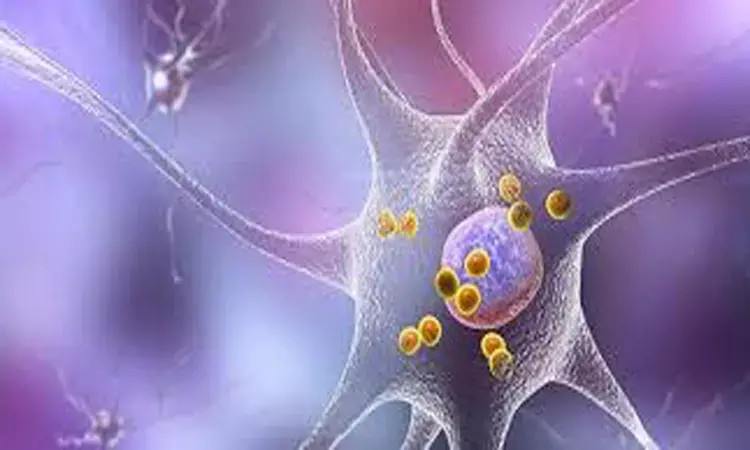- Home
- Medical news & Guidelines
- Anesthesiology
- Cardiology and CTVS
- Critical Care
- Dentistry
- Dermatology
- Diabetes and Endocrinology
- ENT
- Gastroenterology
- Medicine
- Nephrology
- Neurology
- Obstretics-Gynaecology
- Oncology
- Ophthalmology
- Orthopaedics
- Pediatrics-Neonatology
- Psychiatry
- Pulmonology
- Radiology
- Surgery
- Urology
- Laboratory Medicine
- Diet
- Nursing
- Paramedical
- Physiotherapy
- Health news
- Fact Check
- Bone Health Fact Check
- Brain Health Fact Check
- Cancer Related Fact Check
- Child Care Fact Check
- Dental and oral health fact check
- Diabetes and metabolic health fact check
- Diet and Nutrition Fact Check
- Eye and ENT Care Fact Check
- Fitness fact check
- Gut health fact check
- Heart health fact check
- Kidney health fact check
- Medical education fact check
- Men's health fact check
- Respiratory fact check
- Skin and hair care fact check
- Vaccine and Immunization fact check
- Women's health fact check
- AYUSH
- State News
- Andaman and Nicobar Islands
- Andhra Pradesh
- Arunachal Pradesh
- Assam
- Bihar
- Chandigarh
- Chattisgarh
- Dadra and Nagar Haveli
- Daman and Diu
- Delhi
- Goa
- Gujarat
- Haryana
- Himachal Pradesh
- Jammu & Kashmir
- Jharkhand
- Karnataka
- Kerala
- Ladakh
- Lakshadweep
- Madhya Pradesh
- Maharashtra
- Manipur
- Meghalaya
- Mizoram
- Nagaland
- Odisha
- Puducherry
- Punjab
- Rajasthan
- Sikkim
- Tamil Nadu
- Telangana
- Tripura
- Uttar Pradesh
- Uttrakhand
- West Bengal
- Medical Education
- Industry
Higher white-matter hyperintensity tied to greater parkinsonism risk in elderly: JAMA

Chicago, Illinois: Higher levels of both white matter hyperintensity (WMH) and indices of cerebrovascular disease pathologies are associated with more progressive parkinsonism in older adults, shows a recently released research. The study was published in the journal JAMA Neurology on November 1, 2021.
Progressive parkinsonism is a common occurrence in older adults without a diagnosis of Parkinson's disease. It is associated with adverse health outcomes but its pathologic basis is controversial. Shahram Oveisgharan, Rush University Medical Center, Chicago, Illinois, and colleagues, therefore, aimed to examine if the burden of cerebral white matter hyperintensity, a common manifestation of cerebrovascular disease pathologies, is associated with the rate of progressive parkinsonism in a community-based cohort study.
The study included participants recruited in 3 ongoing cohorts that began enrollment in 1994, 1997, and 2004. Participants were observed for a mean of 7.5 years, prior to death. From 4427 participants enrolled in the 3 cohorts, 2134 died. Postmortem autopsy was performed in 1725 decedents, and 598 also had ex vivo brain magnetic resonance imaging (MRI).
Participants were excluded if they were missing any of the 9 postmortem pathology indices (n = 22) or repeated parkinsonism assessment (n = 41) or had received a clinical diagnosis of Parkinson disease at any point before or during the study (n = 19) and were analyzed from April 2020 to August 2021.
Parkinsonism was assessed annually using 26 items of a modified motor portion of the Unified Parkinson's Disease Rating Scale. A summary score was developed from the item scores, with higher scores indicating more severe parkinsonism.
Of 516 included decedents, 364 (70.5%) were female, and the mean age at death was 90.2 years.
Following were the findings from the study:
- Higher WMH was associated with faster progressive parkinsonism (estimate, 0.024; SE, 0.008).
- The attenuation of this association was greater when controlling for indices of cerebrovascular disease pathologies than when controlling for neurodegenerative pathologies (cerebrovascular disease: estimate, 0.019; SE, 0.008; neurodegenerative: estimate, 0.022; SE, 0.008), but both remained significant.
"Further studies are needed to determine if in vivo brain imaging of older adults for evidence of WMH and aggressive medical treatment of vascular risk factors and diseases can reduce the occurrence or severity of late-life parkinsonism," wrote the authors.
Reference:
Oveisgharan S, Yu L, Poole VN, et al. Association of White Matter Hyperintensities With Pathology and Progression of Parkinsonism in Aging. JAMA Neurol. Published online November 01, 2021. doi:10.1001/jamaneurol.2021.3996
Dr Kamal Kant Kohli-MBBS, DTCD- a chest specialist with more than 30 years of practice and a flair for writing clinical articles, Dr Kamal Kant Kohli joined Medical Dialogues as a Chief Editor of Medical News. Besides writing articles, as an editor, he proofreads and verifies all the medical content published on Medical Dialogues including those coming from journals, studies,medical conferences,guidelines etc. Email: drkohli@medicaldialogues.in. Contact no. 011-43720751


